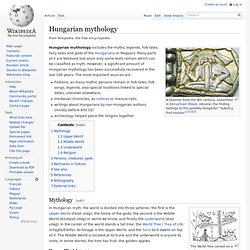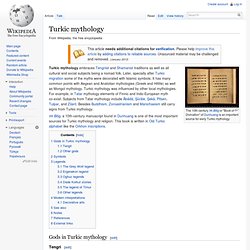

Paleo-Balkan mythology. Global Lithuanian Net. COSMOLOGY OF THE ANCIENT BALTS. Read from beginning 2.

Religion and mythology of the ancestors of the Baltic nations Assimilation of local people by the immigrants resulted in a rather compact culture with a specific religion and mythology. According to Gimbutienė [2], female deities of the Balts originate from the peaceful Nemunas and Narva cultures; they are characterized by their chtonic nature, close relation with water, earth and the Moon and have life-generating powers.
Male divinities show predominantly the elements of the war-oriented Indo-European culture. Together with the Indoeuropean invasion, desacralization of the world was taking place. It is quite probable that at that time (2000-1500 B.C.) the Pamarians and other Baltic ancestors already had a rich mythology and cosmological views. 3. Along with myths describing the origin of the world, its schematic symbolic representation appears. The oldest grave monuments in Lithuania are wooden krikštai, made from a board incised in the form of a tree. Fig. 6. Hungarian mythology.
A fastener from the 9th century, unearthed in Kirovohrad Oblast, Ukraine; the finding belongs to the possibly Hungarian "Subotcy find horizon"[1][2][3] Hungarian mythology includes the myths, legends, folk tales, fairy tales and gods of the Hungarians or Magyars.

Many parts of it are believed lost since only some texts remain which can be classified as myth. However, a significant amount of Hungarian mythology has been successfully recovered in the last 100 years. The most important sources are: Folklore, as many mythic persons remain in folk tales, folk songs, legends, also special traditions linked to special dates, unknown elsewhere;medieval chronicles, as codices or manuscripts;writings about Hungarians by non-Hungarian authors (mostly before 850 CE)archeology helped piece the religion together.
Mythology[edit] The World Tree carved on a pot Upper World[edit] Phrygian mythology. Romani mythology. Origins[edit] The Romani originated in India.

According to mythology, the country was going through a social restructuring and adopting the strict social hierarchy system of castes. Various groups were not included in these newly formed castes for political and religious reasons, and left at the bottom of the caste system. Three groups made up the majority of the casteless: Thieves, musicians/actors (historically performing arts have had a negative social connotation; take a look at eastern theatre's history, for example), and magicians whose magic was deemed 'heretical' by the local religion.
With life in their once native land now unbearable, these casteless people grouped together forming bands which migrated originally to the west. Romani folklore topics[edit] See also[edit] References[edit] External links[edit] Gypsy Folk Tales by Francis Hindes Groome [1899], at Sacred Texts.comGypsy Sorcery and Fortune Telling by Charles Godfrey Leland [1891], at Sacred Texts.com.
Scythian religion. A collection of drawings of Scythian stelae, ranging from ca. 600 BC to AD 300.

Many of them depict warriors, apparently representing the deceased buried in the kurgan, holding a drinking horn in their right hand. Scythian religion refers to the mythology, ritual practices and beliefs of the Scythians, an ancient Iranian people who dominated Central Asia and the Pontic-Caspian steppe in Eastern Europe throughout Classical Antiquity.
What little is known of the religion is drawn from the work of the 5th century Greek historian and ethnographer Herodotus. Scythian religion is assumed to have been related to the earlier Proto-Indo-Iranian religion, and to have influenced later Slavic, Hungarian and Turkic mythologies, as well as some contemporary Eastern Iranian and Ossetian traditions. Archaeological context[edit] The primary archaeological context of horse sacrifice are burials, notably chariot burials, but graves with horse remains reach from the Eneolithic well into historical times.
Turkic mythology. The 10th-century Irk Bitig or "Book of Divination" of Dunhuang is an important source for early Turkic mythology Turkic mythology embraces Tengriist and Shamanist traditions as well as all cultural and social subjects being a nomad folk.

Later, specially after Turkic migration some of the myths were decorated with Islamic symbols. It has many common points with Aegean and Anatolian mythologies (Greek and Hittite) as well as Mongol mythology. Turkic mythology was influenced by other local mythologies. For example, in Tatar mythology elements of Finnic and Indo-European myth co-exist. Irk Bitig, a 10th-century manuscript found in Dunhuang is one of the most important sources for Turkic mythology and religion.